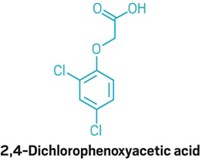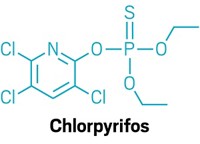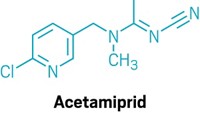Advertisement
Grab your lab coat. Let's get started
Welcome!
Welcome!
Create an account below to get 6 C&EN articles per month, receive newsletters and more - all free.
It seems this is your first time logging in online. Please enter the following information to continue.
As an ACS member you automatically get access to this site. All we need is few more details to create your reading experience.
Not you? Sign in with a different account.
Not you? Sign in with a different account.
ERROR 1
ERROR 1
ERROR 2
ERROR 2
ERROR 2
ERROR 2
ERROR 2
Password and Confirm password must match.
If you have an ACS member number, please enter it here so we can link this account to your membership. (optional)
ERROR 2
ACS values your privacy. By submitting your information, you are gaining access to C&EN and subscribing to our weekly newsletter. We use the information you provide to make your reading experience better, and we will never sell your data to third party members.
Pesticides
US EPA proposes to allow chlormequat on food crops
New uses of plant growth regulator could boost grain yields, farm groups say
by Britt E. Erickson
May 3, 2023
| A version of this story appeared in
Volume 101, Issue 15

US grain producers may soon have a new tool to help improve crop yields in the face of increasingly-severe weather events related to climate change. Against the wishes of environmental groups, the US Environmental Protection Agency is proposing to allow outdoor use of chlormequat chloride, a plant growth regulator, on barley, oat, triticale, and wheat.
Taminco US, a subsidiary of Eastman Chemical, petitioned the EPA to allow such uses in 2021. Regulators did not find any risks of concern to human health, including to infants and children, but they did identify risks to workers who handle the pesticide and to some wildlife.
Chlormequat is currently allowed on ornamentals in greenhouses and nurseries in the US. The chemical blocks hormones that stimulate growth, resulting in shorter and thicker stems that are less prone to breaking and bending.
Earlier this year, the Environmental Working Group (EWG) sounded the alarm after finding chlormequat in oat-based cereals and granola products sold in the US. The advocacy group attributed the pesticide residues to imported grains. It is urging the EPA to not allow use of the chemical on food crops grown in the US.
“Animal studies show chlormequat can disrupt fetal growth and damage the reproductive system, raising serious concerns about how this chemical could harm human health, especially children,” Alexis Temkin, senior toxicologist at the EWG, says in a statement.
Last fall, the National Association of Wheat Growers and the National Barley Growers Association asked the EPA to expedite registration of chlormequat for use in the 2023 growing season. In a September 2022 letter to the EPA, the groups claim that chlormequat would make it more efficient to harvest grains and potentially improve yields.
Before the EPA can register chlormequat for use on food crops, it needs to set maximum residue levels for each crop. The agency is seeking public comments on those residue levels, measures to reduce spray drift, and requirements to protect agricultural workers. Comments are due May 26.





Join the conversation
Contact the reporter
Submit a Letter to the Editor for publication
Engage with us on Twitter